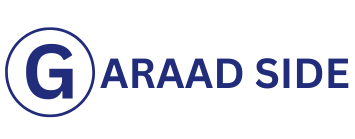Introduction: Navigating the Digital World
In 2025, digital skills are no longer optional — they are the foundation for education, work, and everyday life. Digital Literacyhttps://foundr.sjv.io/WyL1N3 has emerged as one of the most essential competencies for students, professionals, and citizens. From online learning and cloud collaboration to cybersecurity and AI tools, understanding the digital world determines how well you can thrive in it.
This article explores what Digital Literacy is, why it matters, and how to build the skills you need to succeed.
Section 1: What Is Digital Literacy?
Digital Literacy is the ability to effectively and ethically use digital technologies, tools, and platforms. It combines technical skills, critical thinking, and responsible online behavior.
Core Elements of Digital Literacy:
- Technical Proficiency: Using devices, software, and online platforms.
- Information Literacy: Evaluating and verifying information sources.
- Digital Communication: Email, chat, and social media etiquette.
- Cybersecurity Awareness: Protecting personal data and privacy online.
- Digital Creativity: Using technology to create and share content.
- Adaptability: Keeping up with emerging tech and trends.
Section 2: Why Digital Literacy Matters in 2025
- Education Transformation:
Online learning and hybrid classrooms require digital skills for students and teachers alike. - Workforce Evolution:
Most jobs demand computer literacy, data handling, and familiarity with collaboration tools. - Cybersecurity Threats:
With increased online activity comes greater risk — digital literacy includes safeguarding your information. - Global Connectivity:
Communication across borders, languages, and cultures now happens digitally. - AI and Automation:
Workers must understand how AI tools function and how to use them responsibly.
Section 3: Benefits of Digital Literacy
1. Enhanced Employability
Employers look for candidates comfortable with digital tools and remote collaboration.
2. Improved Learning Outcomes
Students who master digital tools access more information and learn efficiently.
3. Better Decision-Making Online
Critical evaluation of online content reduces misinformation and scams.
4. Stronger Security and Privacy
Knowledge of cybersecurity practices keeps your data safe.
5. Increased Creativity and Innovation
Digital tools enable new forms of self-expression and entrepreneurship.
Section 4: Essential Digital Skills for 2025
1. Basic Computer Skills
Operating systems, file management, and productivity suites like Google Workspace or Microsoft Office.
2. Online Research and Evaluation
Using search engines, databases, and verifying credibility.
3. Cybersecurity Best Practices
Strong passwords, multi-factor authentication, secure Wi-Fi, and phishing awareness.
4. Communication and Collaboration Tools
Zoom, Slack, Microsoft Teams, and cloud-based project management.
5. Content Creation and Media Literacy
Video editing, podcasting, and designing graphics using Canva or Adobe tools.
6. Digital Citizenship
Understanding privacy, ethics, copyright, and respectful online behavior.
Section 5: Digital Literacy in Schools
1. Integrating Digital Literacy into the Curriculum
Teaching students how to research online, code, and use productivity tools.
2. Training Teachers
Professional development for educators to effectively use edtech.
3. Closing the Digital Divide
Providing access to devices and connectivity for underserved communities.
4. Parental Involvement
Parents learning digital skills alongside children to create safe online environments.
Section 6: Digital Literacy in the Workplace
- Remote Work Competency: Proficiency with video conferencing, time tracking, and virtual collaboration.
- Data Analysis Skills: Understanding spreadsheets, dashboards, and analytics tools.
- Digital Etiquette: Professional email, chat communication, and virtual meeting behavior.
- Cybersecurity Training: Regular updates and phishing simulations for employees.
Section 7: Tools and Resources to Improve Digital Literacy
Learning Platforms:
Coursera, LinkedIn Learning, Udemy, edX.
Open Educational Resources:
Khan Academy, FutureLearn, and MIT OpenCourseWare.
Government & NGO Initiatives:
Digital literacy campaigns and public training centers.
Community Workshops:
Local libraries and community centers offering free courses.
Section 8: Common Digital Pitfalls and How to Avoid Them
- Falling for Scams and Phishing Emails: Always verify sources.
- Weak Passwords: Use password managers.
- Oversharing Personal Information: Limit public posts and review privacy settings.
- Ignoring Updates: Keep software and apps updated for security.
- Digital Burnout: Balance screen time with offline activities.
Section 9: The Future of Digital Literacy Beyond 2025
Emerging trends include:
- AI-Assisted Learning: Personalized tutoring and digital skill coaching.
- Virtual and Augmented Reality: Immersive learning experiences.
- Digital Credentials and Badges: Verifiable skills through blockchain.
- Ethical Tech Use: Teaching the impact of algorithms, privacy, and AI bias.
- Global Digital Citizenship: Understanding cross-border laws and cultures.
Section 10: How to Improve Your Digital Literacy Today
- Enroll in a Free Course: Start with Google’s Digital Garage or Microsoft Learn.
- Practice Online Research: Evaluate sources before sharing or using data.
- Explore New Tools: Try cloud storage, productivity apps, or digital note-taking.
- Stay Updated on Trends: Follow reputable tech news sites.
- Build a Personal Project: Launch a blog, make a video, or design a website to apply your skills.
Conclusion: Thriving in the Digital Age
In 2025 and beyond, Digital Literacy is the gateway to education, employment, and civic participation. By mastering digital skills, you can navigate the online world confidently, protect your privacy, and unlock new opportunities for learning and growth.
Whether you are a student, professional, or lifelong learner, improving your digital literacy will empower you to thrive in an increasingly connected world.

